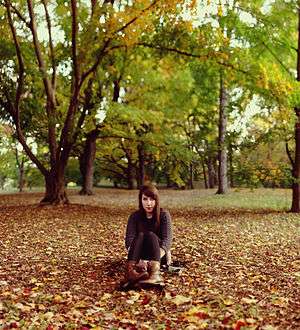Brenizer Method

The Brenizer Method, sometimes referred to as Bokeh Panorama or Bokehrama, is a photographic technique characterized by the creation of a digital image exhibiting a shallow depth of field in tandem with a wide angle of view. Created by use of panoramic stitching techniques applied to portraiture, it was popularized by photographer Ryan Brenizer.
The combination of these characteristics enables a photographer to mimic the look of large format film photography with a digital camera. Large format cameras use a negative that is at least 4x5 inches (102×127 mm) and are known for their very shallow depth of field when using a wide aperture and their unique high level of clarity, contrast and control. Image sensor formats of common digital cameras, in comparison, are much smaller, ranging down to the tiny sensors in camera phones.[1] The Brenizer method increases the effective sensor size of the camera, simulating the characteristics of large format photography.[2]
History, method and usage
Ryan Brenizer refers to the technique as panoramic stitching. It is a recognised technique by many photographers that originated with panoramic film cameras. Its first known appearance was documented in an 1843 patent by Joseph Puchberger. With the development of digital cameras and photo manipulation software, panoramic stitching has become more popular with its inclusion as a preset tool into popular photo editing software packages like Adobe Photoshop and Adobe Elements dating as far back in versions released in 2001.[3] Shallow depth of field panoramic stitching photographs are sometimes referred to as the 'Brenizer Method' as he's popularized it in recent years through his work, with an image produced by this method sometimes referred to as 'Bokeh Panorama'[4] or the portmanteau 'Bokehrama'.[5]
The process requires the taking of multiple shots of a scene in a manner that allows for later image stitching using a fast lens, generally of a focal length of 50 mm or longer.[6] It is also beneficial to use manual focus, manual white balance and manual shutter and aperture controls to maintain a uniform exposure across the entire set of images.
This method is of interest because:
- It allows for the cheap and relatively easy creation of aesthetics usually only available through the use of expensive, complicated and bulky equipment.
- It provides a way of imitating a generally traditional film-based process with digital equipment.
- It creates very high resolution images.
It is generally used for portrait photography (especially wedding photography) and, increasingly, automobile photography.
Further information about the technique
It is quite common for images of this sort to be of an aspect ratio similar to that of an image produced via a traditional analog camera, either square (as often used in medium format cameras) or slightly wider (as used in large format cameras). This can be for several reasons:
- The realignment and mosaicing of images during the image stitching process removes any link between the format of the original images and the output image.
- The image stitching process generally introduces a great deal of distortion. To recover a square or rectangular shape, cropping generally needs to be applied – further distancing the output from the input.
- For aesthetic reasons, an image may be cropped to a ratio in an attempt to further mimic the style of images created through an analog process.
While the aesthetics of this form of imaging most closely resemble large format analog photography, its look has also led it to being compared to tilt shift photography. Both techniques create images that exhibit an unusually shallow depth of field.
Examples of Brenizer Method
 Pomegranate bokehrama portrait from flickr user 'amira_a'
Pomegranate bokehrama portrait from flickr user 'amira_a' Brenizer Method bokeh shaping image from flickr user 'da5nsy'
Brenizer Method bokeh shaping image from flickr user 'da5nsy' An example of the Brenizer Method from flickr user 'miggslives'.
An example of the Brenizer Method from flickr user 'miggslives'. Brenizer Tomatoes from flickr user 'Harry Pehkonen'
Brenizer Tomatoes from flickr user 'Harry Pehkonen' Bokehrama portrait by river from flickr user 'amira_a'
Bokehrama portrait by river from flickr user 'amira_a' Bokehrama16 shots canon 85mm f1.8 Author - Leon Grim
Bokehrama16 shots canon 85mm f1.8 Author - Leon Grim
References
- ↑ Naryškin, Romanas. "Advanced Photography Technique: Brenizer Method Panorama". Photography Life. Retrieved 15 May 2014.
- ↑ Chan, Norman. "How To Get Better Depth of Field Photos with Your Camera". Tested.com. Retrieved 24 March 2014.
- ↑ https://www.ephotozine.com/article/photomerge-in-photoshop-elements---software-guide-4695
- ↑ Group page. "Bokeh Panoramas". Flickr Bokeh Panoramas. Retrieved 24 March 2014.
- ↑ amira_a. "Bokehrama". Flickr: amira_a. Retrieved 24 March 2014.
- ↑ Zhang, Michael. "Portraits Shot Using the Brenizer Method, a 400mm Lens, and iPhones for Lighting". petapixel.com. Retrieved 24 March 2014.